Formic Pro in Hot Weather — Slowing the Rate of Vapor Release
Contents
Hard “Flash Treatment” vs Slow-Release. 1
Extended-Release Application. 2
But Did the Wrapped Strips Kill Mites?. 8
Formic Pro in Hot Weather —
Slowing the Rate of Vapor Release
Randy Oliver
ScientificBeekeeping.com
First published in ABJ in October 2022
Last month I wrote about some “quick and dirty” preliminary experiments to investigate methods to possibly reduce queen turnover when applying Formic Pro during hot weather. We followed up with some more experimentation with the strips.
Hard “Flash Treatment” vs Slow-Release
The challenge when using formic acid for varroa control, especially in hot weather, is to find the “sweet spot” of enough vapor intensity and duration to kill the mites, without knocking out the queen.
Flash Treatments
A flash treatment is of short duration, measured in hours, as opposed to days. An overnight hard flash application of formic acid can indeed penetrate the cappings and kill the mites thereunder, but at the potential cost of causing the loss of the queen.
Dr. Jim Amrine wrote about using a hard “flash” treatment to control varroa [[1]], and my sons and I played with it a bit some years ago [[2]]. Amrine used 80-110 mL of a “weak” 50% formic acid solution, and obtained good kill of mites under the cappings.
Another flash treatment widely used by Canadian beekeepers, typically involves pouring 30-40 mL (sometimes more) of a more concentrated (60-65%) formic acid solution into meat pads (“mite wipes”), applying them on the top bars, and repeating three or more times, 7-10 days apart.
Practical application: The necessity of reapplying the lower dose of formic acid indicates a lack of efficacy at the killing the mites in the brood. There is a clear tradeoff between applying formic vapors strong enough for penetration and kill off the mites, but being “gentle” enough to not kill the brood and queen. The labor involved in the necessity of repeated applications led others to develop extended-release methods.
Extended-Release Application
Years ago, the Europeans, as well as others, developed extended-release methods to apply formic acid, involving placing an absorbent matrix saturated with formic into a perforated zipper-top bag or some sort of fancier plastic application device to regulate the rate of release.
Practical application: The evaporation rate of formic acid is dependent upon the exposed surface area of the delivery matrix, the temperature, and the humidity. Within the cluster, temperature and humidity are largely held fairly constant by the bees, but when an irritant such as formic acid is introduced, the bees may fan vigorously, causing more rapid ventilation, resulting in inadequate penetration of the vapors into the capped brood cells.
On the other hand, at lower concentrations of formic vapors, the bees quickly acclimate and ignore the fumes, and I suspect that they maintain near-normal temperature and humidity around the delivery matrix or device (if anyone has recorded data on this, I’d love to see it).
There are a number of adjustable formic application devices sold in Europe. The Nassenheider evaporator, invented by the German beekeeper Bruno Becker in the 1990s, is also widely used. It allows the user to precisely adjust the rate of formic vapor release. One suggested daily evaporation rate when using 60% formic acid is 15 – 20 mL in warm weather, or 6 – 10 mL when cooler. If the evaporation rate is below 6 ml per day, the treatment may not be successful [[3]].
In North America, lately-deceased beekeeper Bill Ruzicka developed the slow-release MiteGone pads [[4]]. At the normal broodnest relative humidity of 45%-65%, the evaporation rate of 65% formic from a MiteGone pad hit a target minimal release rate of around 6 grams, but at 85% humidity, the evaporation rate dropped to 3 grams a day, and additional pads needed to be added [[5]].
Practical application: Note that for the products above, the recommended daily rate of release of 65% formic was in the 10-20 g range, as compared to the recommended 60-80 g (or more) for an overnight flash treatment.
Years ago, Medhat Nasr and David VanderDussen developed a formic-saturated pad in a plastic bag punched with ventilation holes. NOD Apiary Products later marketed them as Mite-Away, and later Mite-Away II pads, designed to be applied in a spacer rim above the cluster. NOD later replaced that product with slow-release strips to be placed directly within the cluster (to avoid the need for a rim), first releasing MiteAway Quick Strips, and more recently Formic Pro (which has a longer shelf life).
Over the years, I’ve tested the above products, and collected data on their rates of release of the formic acid vapors (Figure 1).
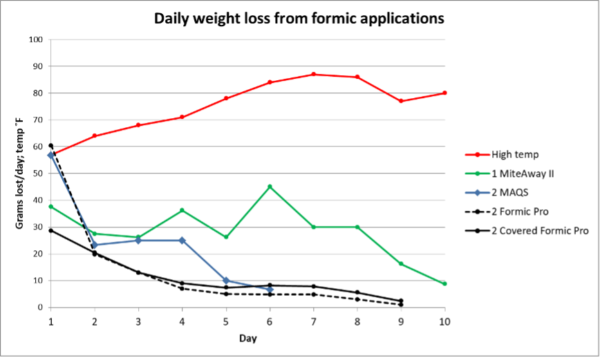
Fig. 1 Mixed data on mean daily weight loss from various NOD Apiary products. High-temperature, MAII, and MAQS data are from 2016; Formic Pro data from 2021 (at highs of ~95°F). Note how the early MAII pads, designed to be applied in a rim above the cluster, gave a fairly steady daily release of 30-40 grams, compared to the later strips, which give a more-intense formic “flash” the first day, then a rapidly-dropping rate of release on the ensuing days.
Practical application: The initial flash of vapors from MAQS or Formic Pro are associated with queen turnover or loss when applied at above the recommended maximum temperature for application (85°F) (From the label: ”Hot temperatures (>92°F) during the first three days may cause excessive brood mortality and queen loss”). But note that by covering the Formic Pro strips with their wrapper, that first-day flash can be eliminated (solid black plot). Our experiments last month suggested that partial covering of the strips might be a way to avoid queen issues, while still obtaining reasonable efficacy against varroa.
Add: The old MiteAway II pads gave a more consistent and extended offgassing of formic acid. I’m not sure that the new products are actually an improvement!
Since we are stuck with increasingly hot summers, we may need to get creative to be able to utilize formic acid during summer weather. I’m unable to test under conditions of high humidity, but followed up on the exploratory research detailed in my previous article — specifically, what would happen if we further reduced and extended the release of the vapors?
Our Follow-Up Experiments
My helpers and I, encouraged by the minimal amount of queen turnover when we covered single Formic Pro strips with their wrapper, wondered about applying two strips at once, but greatly restricting their evaporation rate by leaving them in their original wrapper with only the ends cut off. This would greatly reduce the amount of evaporative surface area, and perhaps provide a low-intensity extended release similar to the Nassenheider or MiteGone delivery methods.
We tried two different application methods (Figures 2 & 3), comparing them to the covered strip method detailed last month.
Note and Objectives: These experiments were not according to label directions. This was exploratory research to (1) observe colony response to a slow-release application of formic acid, and (2) determine whether it was able to substantially reduce the mite infestation rate. We had a limited number of high-mite colonies to work with, so were not able to run tests on as many hives as we would have liked.
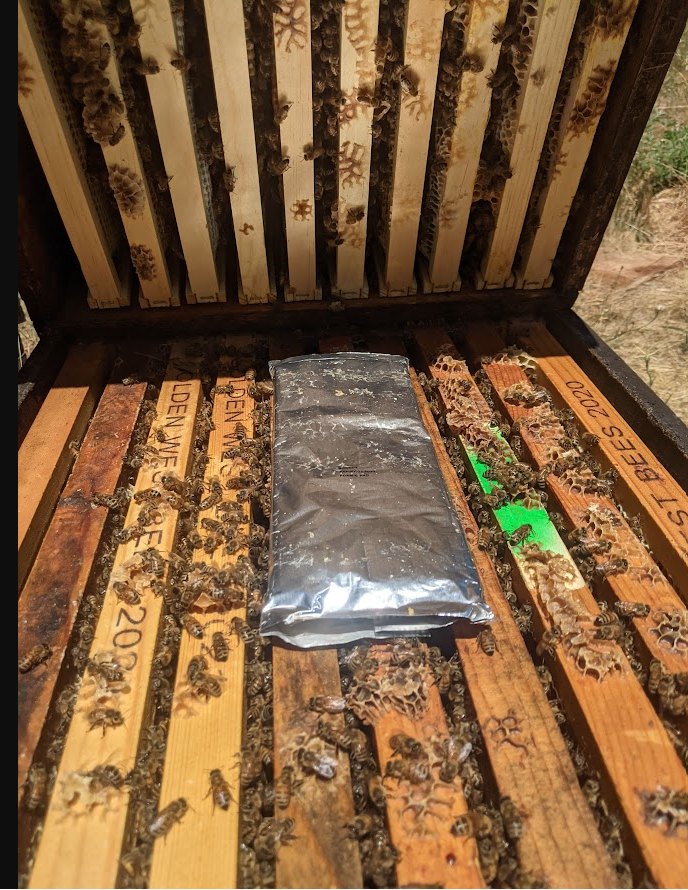
Fig. 2 In three colonies, we left the two strips within their original wrapper, with only the two ends cut off, placing them directly over the brood combs in the lower brood chamber.
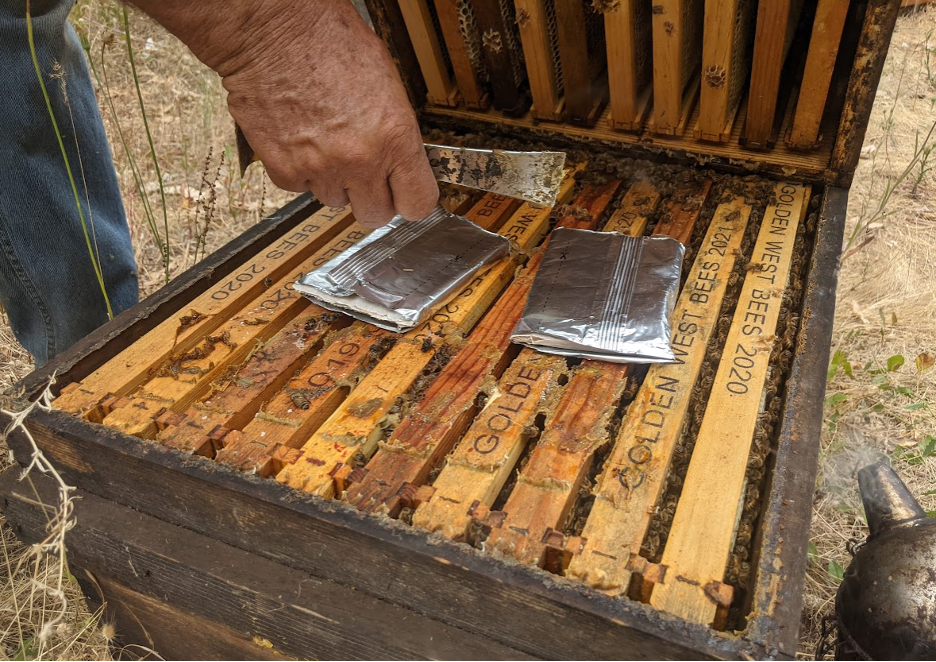
Fig. 3 After observing minimal colony disruption due to the previous treatment, the next day we doubled the amount of evaporation area in seven additional colonies, by cutting the packages of strips crosswise, which also better spanned the brood area.
As positive controls, we also treated five colonies with a single unwrapped strip (outer membrane intact), loosely covered on top with its wrapper, and treated a single colony with two separated unwrapped Formic Pro strips, also covered with wrappers.
For all the colonies, we restricted the entrances to see how they would handle the various application methods in hot weather (Figure 4). I inspected the hives daily for the first several days after application (Figures 5 & 6). The experiments were performed in late July through mid-August, with the daily temperature highs in the mid-90s. The colonies were in double or triple deeps, and varied in strength. There was a moderate nectar flow on, which may have raised cluster humidity. We performed follow-up mite washes after 21 days.
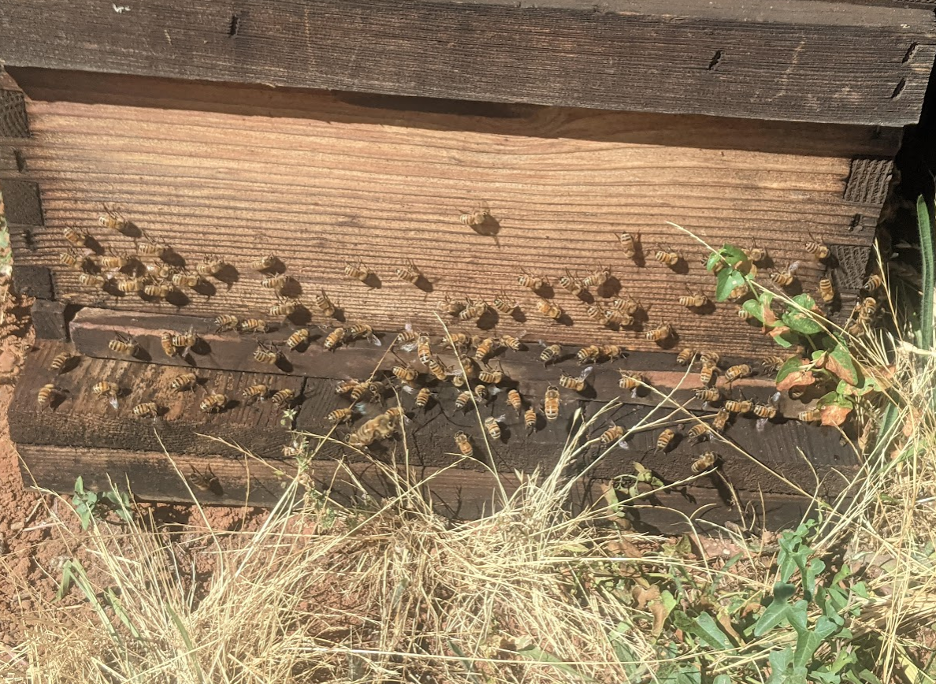
Fig. 4 We inserted wedge-type entrance reducers with a single 3/8” x 3” opening. For the unwrapped but covered strips, there was noticeable bearding the first couple of days. But for the wrapped strips, the photo above was typical of the maximum amount of bearding on the first day, with no noticeable bearding or fanning afterwards.
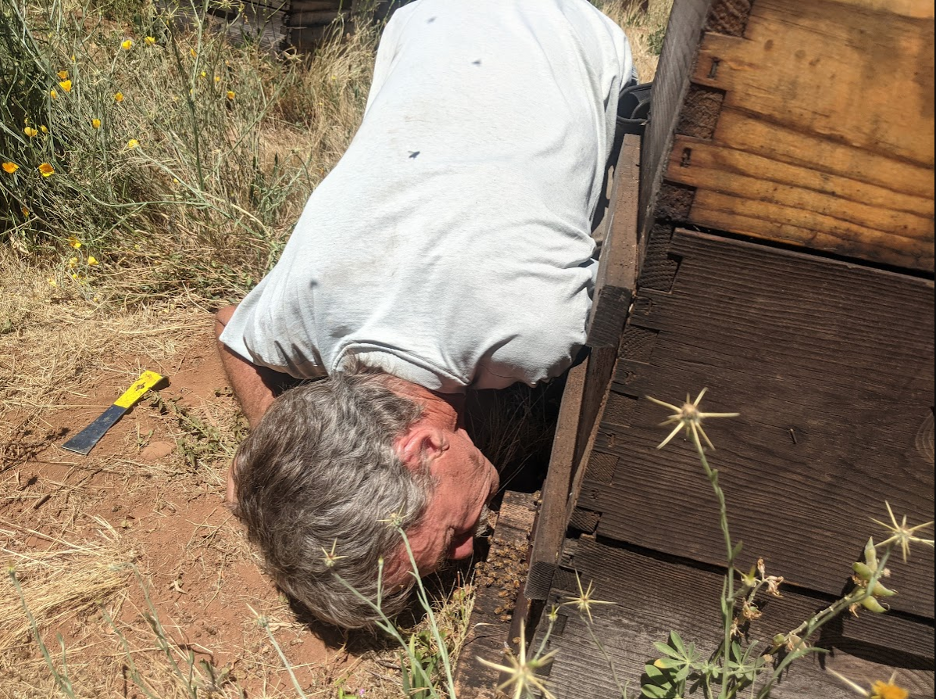
Fig. 5 Formic vapors often kill any vegetation immediately in front of the entrance of a treated hive, but during our experimentation, the grass was already dried up. For the first several days, I checked for the odor of formic vapors in the exhaust from the reduced entrances — formic fumes were strong only from the colony treated with two covered strips, and noticeable for the single covered strips. I was surprised that there was no obvious formic odor exhausting from the entrances of any of hives containing still-wrapped strips, even on the day after application.
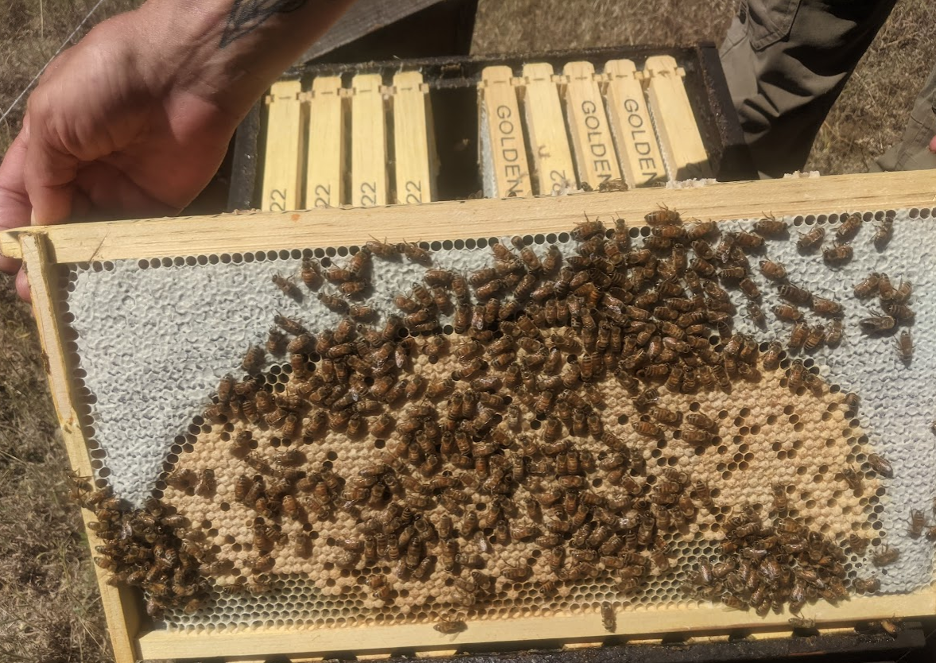
Fig. 6 The colonies with the wrapped strips initially reduced broodrearing a bit, but continued to store honey, and quickly reestablished healthy broodnests.
Of interest, when we removed the wrapped strips after 21 days, was that they were still quite moist within the wrappers, and still smelled of formic acid, but not very strongly. It appeared that the acid had evaporated more than had the water. Due to the remaining water in the strips, I was unable to calculate the amount of formic acid released during the 21-day treatment intervals.
But Did the Wrapped Strips Kill Mites?
OK, the colonies tolerated the wrapped strips just fine. Unfortunately, the slow-release treatment didn’t appear to bother the mites very much either. I’ve plotted the results in Figure 7.
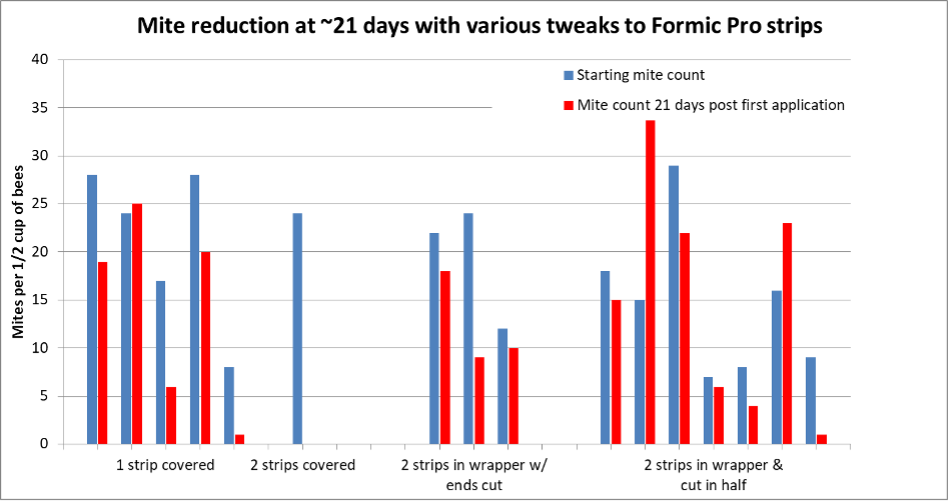
Fig. 7 Treatment of one colony with two strips, separated and covered with their wrapper material, was quite efficacious (resulting in an ending mite count of zero). A single application of only one covered strip to five colonies, resulted in a “knockback” of the mite infestation rates in the ballpark of 45% (indicating that a second application would be required to obtain full efficacy). But there’s too much red showing for either of the slow-release treatments involving strips still wrapped in their packages, with an overall mite reduction for the ten colonies of only 12%.
Not unexpectedly, only one colony in the wrapped strips groups was queenless at 21 days. Perhaps of interest is that the 2-strips covered colony, although still queenright, had supersedure cells (not unusual for a 2nd-year queen).
Discussion
Formic Pro works fine when applied according to its label instructions at recommended temperatures — these experiments were to see whether we could reduce queen turnover when formic treatment is applied in hot weather, while still attaining desired mite reduction by slowing the rate of vapor release.
There were too few colonies involved in these quick and dirty experiments to draw firm conclusions, but the rate of formic release from Formic Pro strip packages with only the ends cut off appeared to be insufficient for varroa control. However, partial covering of Formic Pro strips to reduce the first-day flash off, may in hot weather may be a means of minimizing queen turnover or loss. If you try this yourself, I’d be interested in hearing your results!
Citations and Notes
[1] Amrine Jr, J, & R Noel (2006). Formic acid fumigator for controlling varroa mites in honey bee hives. International Journal of Acarology 32(2): 115-124.
[2] Messin’ With Varroa 2014 – Scientific Beekeeping
[3] The Nassenheider Evaporator (dave-cushman.net)
[4] MiteGone for effective control of the varroa & tracheal mites
[5] Treatment Modification March 21 Y doc (mitegone.com)



